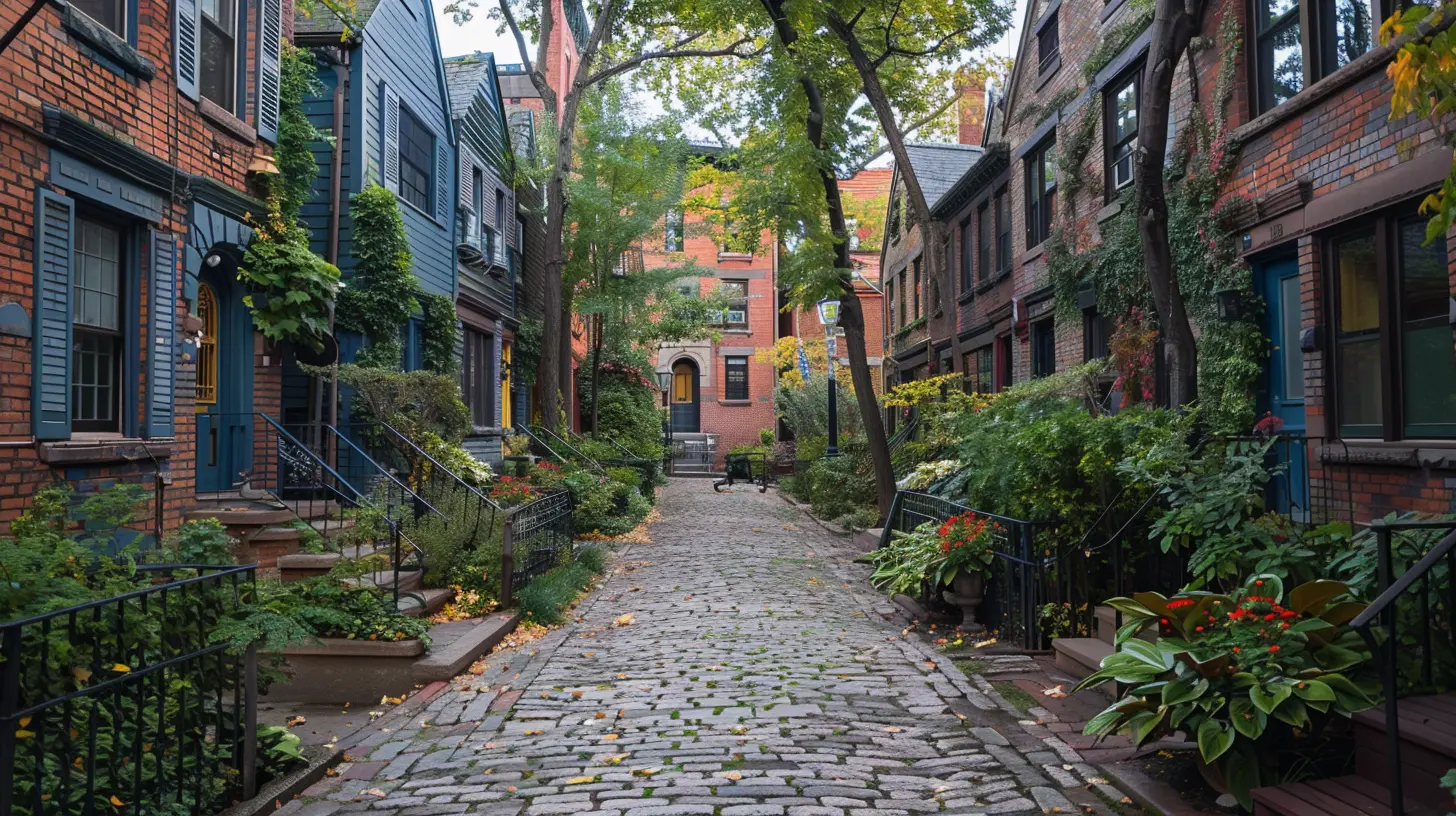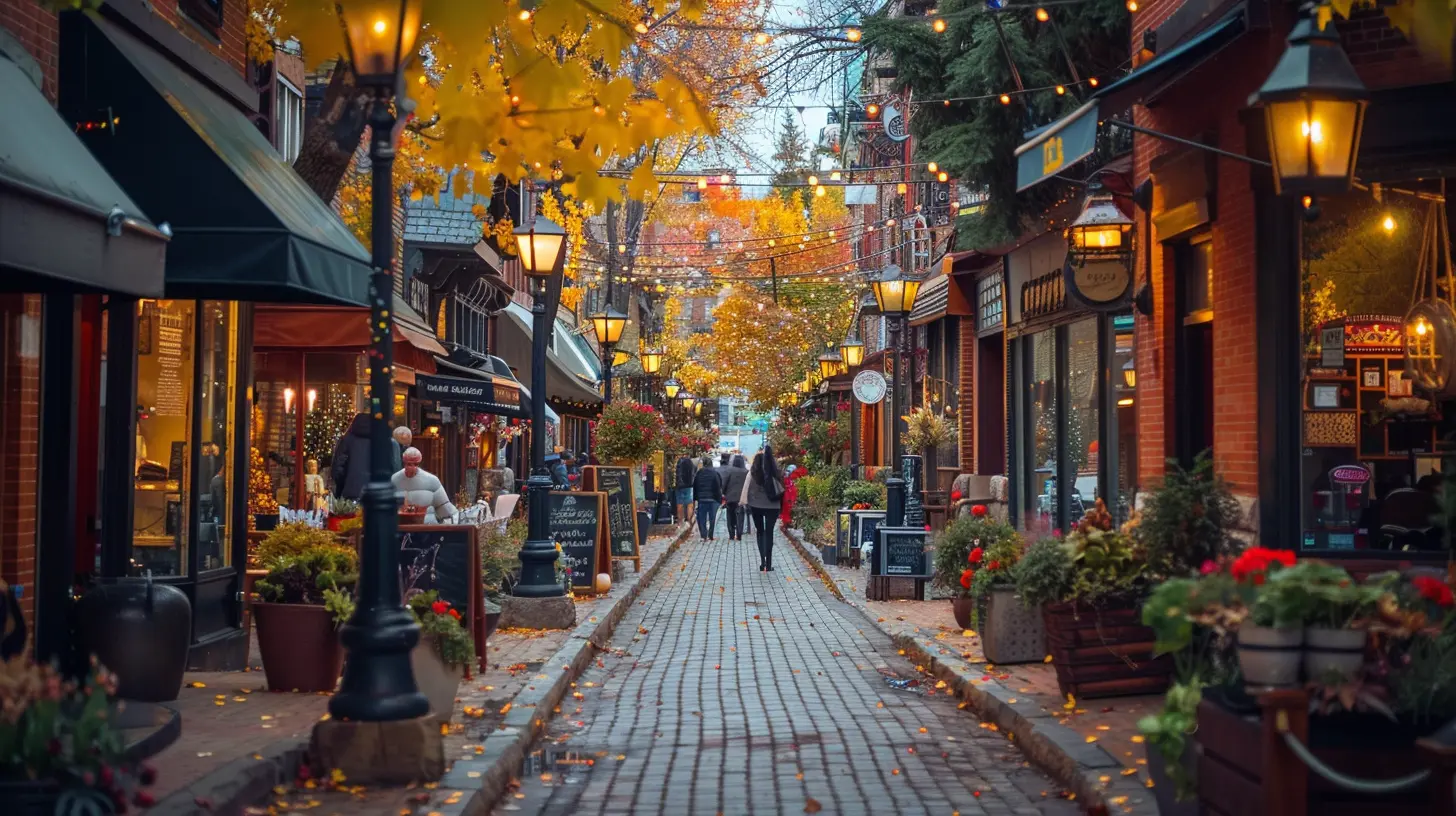How Living in a Walkable City Can Save You Money
1 November 2025
Ever thought your morning stroll could be more than just a daily routine? What if walking to your favorite café or the corner grocery store could actually pad your wallet? Believe it or not, living in a walkable city isn’t just good for your health—it’s fantastic for your finances too.
Living in a walkable city means you’re never too far from the essentials—groceries, parks, restaurants, and even work. It sounds simple, but the financial perks are massive and often overlooked. So grab your walking shoes, and let’s break down how embracing a walkable lifestyle can seriously cut down your expenses and bring some peace of mind along the way.
🚗 Bye-Bye Car Payments, Hello Savings
Let’s start with the big one: ditching the car. Owning a vehicle is no joke—it’s like having another mouth to feed. Between car payments, insurance, gas, maintenance, parking fees, and those unexpected repair bills (because your car never breaks down when it's convenient), you're easily shelling out thousands of dollars each year.In a walkable city, you might not need a car at all. Public transportation, biking, and, of course, walking, can take care of most of your movement needs. If you do need a vehicle occasionally, ride-sharing or renting one for a day is often still far more affordable than full-time ownership.
Savings Snapshot:
- Average annual cost of owning a car: $10,000+
- Annual cost of a monthly public transport pass: ~$1,200
- Walking: FREE!
Just think—what could you do with an extra $8,000 or more a year?
🏡 Smaller Living Space, Bigger Wallet
Walkable cities are often more densely populated, which means housing tends to be a bit more compact. Now before you groan at the thought of a smaller apartment, hear me out.Smaller spaces mean lower rent or mortgage payments, cheaper utility bills, and less square footage to furnish (read: less shopping). Plus, let’s be real—how much of your current space do you actually use?
In a walkable city, your home extends beyond your four walls. Parks become your backyard, cafés become your second office, and community spaces feel like extended living rooms. You're not downsizing your lifestyle—you're just reallocating your resources more smartly.
⛽ Fuel Isn’t Cheap—But Walking Is
Gas prices are notoriously unpredictable. One day you're cruising along with a full tank, and the next, you're staring at the pump wondering if you need to sell a kidney to fill up.Now picture this: You haven’t visited a gas station in months because, well, you walk everywhere. That’s not just liberating—it’s financially empowering.
Even if you take public transportation occasionally, it’s still wildly cheaper than constantly filling up your tank. Plus, fewer car trips mean fewer emissions, which means you’re not just saving money—you’re also helping out the planet.
🍔 Groceries and Dining Out Within Arm’s Reach
We’ve all been there: driving ten minutes to pick up groceries, grabbing fast food along the way because “it’s convenient,” and spending more than we planned because we were hangry.Walkable cities flip that script. Walking to the grocery store means you shop more frequently and more intentionally—you’re buying what you actually need because you're probably limited to what you can carry. That, my friend, is a secret trick to curbing impulse spending.
Not to mention, in walkable communities, local markets and neighborhood eateries are often cheaper and healthier than chain restaurants or mega-retailers. Supporting local businesses often comes with better prices and better service. Win-win, right?
☕ Impulse Spending Slows Down
When you drive everywhere, you’re exposed to a million temptations—billboards for sales, drive-thru coffee shops, stores you stop in “just for one thing” (and leave with five). Those little pit-stops can quickly add up.But when you're walking, it’s easier to keep those impulses in check. You’re more focused on your destination, and let’s be honest—you’re probably not going to lug around five shopping bags. You buy what’s necessary and leave the rest.
Walking helps you pause and think—“Do I really need this?” Most times, the answer is no, and that’s money that stays right where it belongs—in your bank account.
🏋️ Health = Wealth
Let’s not forget the hidden expense of poor health: doctor visits, medications, gym memberships, and time off work. Sedentary lifestyles can sneak up on you, and the medical bills that follow aren’t cheap.Walking regularly has massive health benefits—it boosts your cardiovascular health, improves your mood, reduces stress, and even helps manage weight. And the best part? It’s built right into your everyday routine when you live in a walkable area.
Skip the pricey gym membership. Your neighborhood is your new treadmill.
🧘♀️ Less Stress, More Happiness
Okay, hear me out—this isn't just about nickels and dimes. Living in a walkable city reduces the mental strain that comes with traffic, long commutes, noisy highways, and parking nightmares. And while your therapist probably loves you, fewer stressors mean fewer therapy bills.Seriously though, there’s something empowering about walking to your destination. It gives you time to think, breathe, and connect with your surroundings. Mental clarity, better mood, and a sense of community are hard to slap a price tag on—but they sure help with your overall well-being.
👫 Everything’s Closer, So You Do More (For Less)
In a walkable neighborhood, boredom is basically extinct. Museums, music venues, art galleries, fitness classes, festivals, and open markets—so many of them are just a few blocks away and often low-cost or even free.Compare that to the suburbs or rural living, where entertainment options might be a long drive away. Not only do you spend on gas, but also parking, entrance fees, and maybe even an overpriced snack or two because you’re stuck once you get there.
In cities with high walkability, cheap fun is everywhere. And when fun is affordable (or free), you’re less likely to overspend.
🔨 Maintenance Costs Plummet
Cars need oil changes, tire rotations, brake replacements—and that’s assuming nothing major breaks. Homes in suburban areas often come with yards to mow, driveways to repair, and roofs that need constant attention.Living in a walkable city often means smaller condos or apartments where maintenance is either minimal or handled by building management. That’s less time, money, and energy spent on upkeep—and more of all three to spend on things you actually enjoy.
🛠️ Public Infrastructure Adds Value
Walkable cities usually have solid public infrastructure—well-maintained sidewalks, clean parks, bus routes, bike lanes, and community centers. Even though these are funded by local taxes, you’re getting a lot of bang for your buck.When a city invests in infrastructure that encourages walking, it's not just good for your feet—it’s good for your finances. You get access to better resources without having to pay out of pocket for private amenities or personal transportation.
🌇 Higher Property Value, Better Long-Term Investment
Here’s a surprising twist: real estate in walkable neighborhoods often holds its value better. Why? Because walkability is in demand. As more people prioritize lifestyle and convenience, they're willing to pay a premium for properties in walkable areas.If you own property in a walkable location, you're sitting on a gold mine (potentially). And if you rent, your lifestyle lets you save more monthly, which could one day help you buy your own place—minus the suburban mortgage trap.
✨ Final Thoughts: Step Into a Better Financial Future
Living in a walkable city isn’t about giving things up—it’s about gaining so much more. It offers a lifestyle where saving money happens naturally. You’re not constantly battling traffic, maintenance bills, and impulse purchases. Instead, your life is streamlined, minimal, and—dare we say it—joyful.So, next time you lace up your sneakers and step out the door, smile. Every step you take isn’t just good for your soul—it’s great for your bank account, too.
And hey, your fitness tracker will love you for it.
all images in this post were generated using AI tools
Category:
Cost Of LivingAuthor:

Audrey Bellamy
Discussion
rate this article
1 comments
Stella Lee
Embrace walkable cities—saving money while enjoying vibrant, healthy lifestyles!
November 4, 2025 at 1:50 PM

Audrey Bellamy
Absolutely! Walkable cities not only enhance well-being but also reduce transportation costs, making them a smart and enjoyable choice for a healthier lifestyle.


